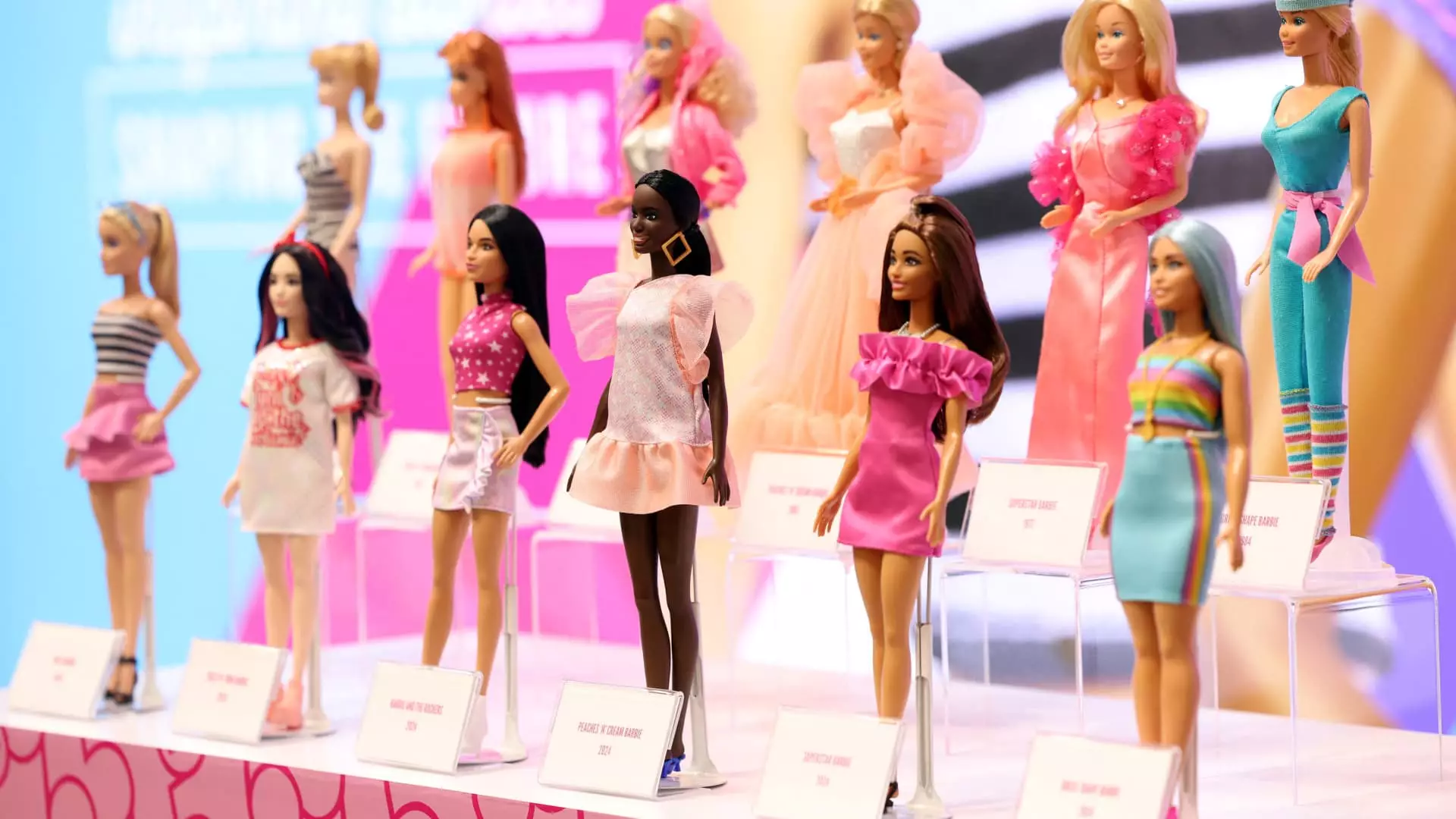Mattel, the iconic toy manufacturer known for brands like Barbie and Hot Wheels, is facing potential challenges due to the recent tariffs imposed by the Trump administration. As the company navigates these financial waters, it must consider the ramifications of its current supply chain model and how best to protect its profitability while maintaining consumer trust. The weighing of price hikes against tariff pressures underscores a significant moment for a corporation that has a storied presence in the toy market.
The announcement of a 10% tariff on Chinese goods has sparked concerns across various industries, particularly for companies like Mattel that rely heavily on international sourcing. With 40% of its toys manufactured in China and a mere 10% in Mexico, the weight of these tariffs could lead to notable price increases for consumers. Such a move may not only affect sales but could also alter consumer perceptions of brand value. Mattel’s finance chief, Anthony DiSilvestro, noted that the company is actively exploring strategies to mitigate these impacts, including adjusting their sourcing practices and, potentially, passing costs onto consumers.
Analysts and economists have universally acknowledged that levies like these typically lead to higher retail prices. This recognition raises fundamental questions about how businesses can balance the need to maintain profitability while being mindful of their consumer base. For Mattel, the delicate dance involves collaborating closely with retailers and considering each price adjustment carefully, ensuring that the long-standing relationship with consumers is not adversely affected.
As Mattel looks to adapt in the face of increasing costs, it is essential to examine the broader implications for the toy industry at large. Tariffs specifically targeting imports from China could force companies to reassess their operational strategies, particularly those heavily reliant on overseas manufacturing. With roughly 80% of toys sourced from this region, it may become increasingly vital for firms to either diversify their supply chains further or absorb some costs.
Mattel has a unique advantage over some competitors, with a diversified manufacturing footprint. By leveraging production capabilities in seven different countries, the company can pivot its operations to areas less affected by tariffs. The move to decrease sourcing from China and Mexico to around 25% by 2027 illustrates an effort to stabilize production flows and ensure sustainability in an unpredictable market.
Another layer of complexity arises from the potential price hikes stemming from these tariffs. As Mattel weighs this option, it must consider consumer sentiment—a crucial factor in preserving market share. The willingness of consumers to absorb higher prices for popular products like Barbie dolls and Hot Wheels is uncertain. In prior economic cycles, price sensitivity among consumers has led to notable shifts in purchasing habits, prompting manufacturers to reassess pricing strategies to support demand.
The company’s recognized brand loyalty and historical significance will play a pivotal role in its pricing strategies. While there may be some reluctance to increase prices due to the fear of losing sales, it is equally important for Mattel to safeguard its profit margins. Ultimately, maintaining a balance between understanding consumer expectations and achieving business viability will be integral to the company’s short- and long-term strategies.
Mattel is at a critical juncture as it evaluates its response to the current trade war and implications that tariffs present. As the toy giant contemplates the necessity of potential price increases on beloved products, it must tread carefully, ensuring that consumer relationships remain strong while navigating through the complexities of global supply chains. The decisions made today will not only define Mattel’s immediate financial health but will also shape its strategic posture for the years to come. In an environment characterized by economic uncertainty, adaptability, and consumer-centricity will be essential in securing the company’s place in the ever-competitive toy market.

